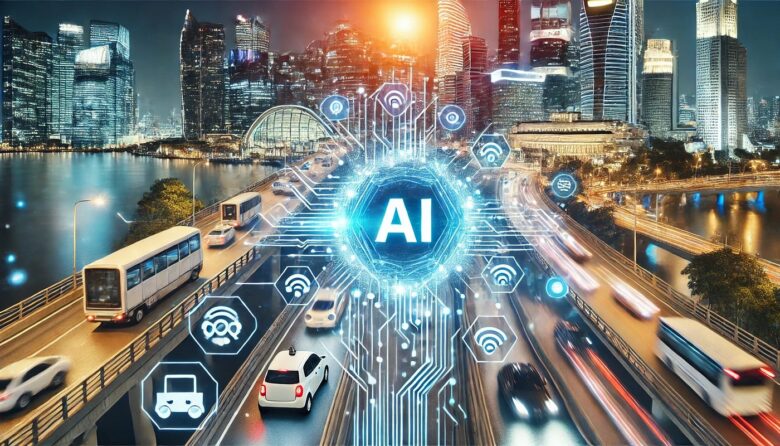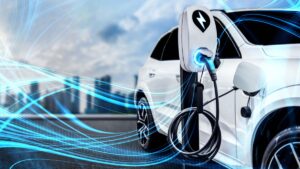Consider a world in which you would simply get inside the car, push a start button, and allow the vehicle to take over all driving functions, including maneuvering through traffic or even finding a vacant lot for parking. Conclusively, its not only a mid-century gold dream. Because of artificial intelligence, we are quickly drifting towards such realities. As such advances in technology develop rapidly, everything gets influenced by artificial intelligence, especially transport construction.
Standing right from autonomous cars to intelligent traffic control scale impacts on everybody’s movement from point A to point B. All the great monitoring improvements or advancements come with doubts of safety durability and ethical issues and interpretations on what is expected for us in the coming days. Therefore, come this way, we shall examine how AI is transforming transportation for the better and the worse, and everything that falls somewhere in between. Your next road trip may look very different than it does today!
Self-driving cars Recent progress in technology for self-drivable vehicles has been thus extraordinary the last two decades. Innovative ideas and new technologies are changing people’s perceptions of transportation.
Any of these Lidar systems, radar or even computer vision is employed to give an enormous comprehension of the immediate environment of specific vehicles. Such sophisticated amalgamation of sensors permits cars to operate even in the most challenging conditions with incredible precision.
In recent years, a number of studies have pointed out the importance of machine learning algorithms in the advancements of any decision making process. Gathering enough driving data facilitates vehicles to operate under various traffic and object conditions.
Leading automotive corporations flaunt their willingness to risk in self driving technology. Working together with IT enterprises is enhancing the pace of progress and broadening the horizons.
Field trials are bourgeoning, which is a good sign of confidence. These exercises are done in cities where there are many users of the. Avoidable, test subjects ministry.
As the said developments come along, one can predict with a fair degree of certainty that self-driving cars will not just be a luxury to many people, but they will completely change how people travel to work, making the process certainly better.
Benefits of Adopting AI Technology in Transportation:
There are plenty of reasons why transportation is better when brought on the AI level. The first, and perhaps the most important one, is the increased level of safety. Using AI systems aids in accidents prevention. Real time data can be processed via numerous systems, therefore increasing the rate of recognition of risks as compared to human drivers. There are also some efficiency benefits. There is improvement in how much time it takes to complete a vehicle’s travel by minimizing the distance it takes to the vehicle. This does not only reduce costs but also reduces the ecological footprint. Moreover, this fact also improves the management of traffic. Using clever codes, traffic lights will be altered according to the traffic at that time, which reduces congestion of cities and enhances mobility within cities.
Customer experience improves as well. Thanks to AI, personalized services allow customer nuances to be taken into consideration, resulting in better emergence experiences. Plus, predictive analytics make maintenance such as checks and fluid changes something of the past. Continuous assessment of the vehicle can allow maintenance to be managed and repairs to be undertaken before the vehicle breaks down or causes an accident. These benefits showcase instrumental role which AI will play in transport in the future.
Ethical Considerations and General Issues:
The presence of AI in transportation systems brings about ethical problems. Of the many ethical issues in self-driving cars, Dingus1 points out that one key area of concern is how a self-driving vehicle will ‘decide’ during emergencies. What course of action should be taken when a self-driving car faces a no-win situation which can cost human lives? Also come data privacy concerns. Technologies such as these will require AI systems installed in vehicles to gather and keep a lot of data about users, increasingly lightening the question of who owns the data or what it is utilized for.
There are also concerns about how the changing landscape will impact employment. There is the fear of the loss of conventional driving jobs for most populations and how those effects will translate to the economy caused by fine mobility. Equity must be considered too; not all communities have equal access to advanced technologies. This inequality might exacerbate the current challenges of accessibility and safety in transportation. The legal environment surrounding accidents when it comes to the use of AI is also vaguely outlined. Who is at fault, the car makers or the software creators? is another contentious issue that has not been resolved.
Challenges and Obstacles for Copious Demand of AI in Transportation:
There are several challenges hindering the extensive incorporation of artificial intelligence technology in transportation. One such area is the established regulatory frameworks. Currently, governments are struggling with how to create legislations for self-driving and what safety measures should be in place. Data security issues are a cloud. Given the fact that vehicles are capable of gathering delicate information with regard to the users, public apprehension over data safety increases. Social acceptance is one more hurdle. However, there still exist people who hesitate to trust the self-helming systems for safety and efficiency reasons after some alarming news.
Infrastructure has its problems as well. Roads and traffic signals need improvements so that AI technologies can be incorporated in a proper manner. Money is another worry; creating such systems is expensive and might deter small players from the market. Another sticky situation which may arise relates to programming algorithms concerning crucial issues about the risk of operating machines—an instance is, how should an attractive AI allocator of accidents decide which lives should be spared?
Futuristic Views on the Application of AI in Transportation:
The adoption of AI in transportation presents numerous opportunities for the development of the industry. Let us now envisage futuristic municipalities featuring such vehicles that will interact with each other, thus enhancing the relative flows of motion and drawing no piles of traffic. Traffic jams hence might be eliminated. There might be great advancements in intelligent public transport systems. The deployment of buses and trains with no person inside will not take long to come, providing greater effectiveness to commuters.
Equally important will be the place of sustainability. Battery life use can be optimized using routing for electric cars using AI, which results in less emission. The trend towards such new transport corresponds to the goals of sustainability around the world. And there is a wish to meet the personal needs with regard to travel as well. It will be entirely feasible that AI computing will use the individual data to create an optimal route or transport for the user. Accident rates are bound to go significantly down because of the search of the safe road of programming applied in this case, and many lives will be preserved as we outreach this remarkable phase of transportation rebranding.
Conclusion:
There is no doubt that the future of transportation lies with artificial intelligence. Exploring this new venture is overwhelming due to the extensiveness of the opportunities within it. AI can change the way we travel for the better by making it safe and productive. The introduction of these changes will be pleasing; however, as comforting as it is in fighting these changes, I am hopping to say that there is no need to resist these changes because technology renders them inevitable. For and against these developments, the world is upon us; however, who can deny our enjoyment? While these changes will result in a large number of competitions, caution is still required as these technologies become more widely accepted. Committing herself to societal complexities devoid of critical ethical analysis is unnecessary doom.
Looking ahead, the collaboration of tech developers, policymakers, and communities is likely to determine the attainment of an inclusive transportation ecosystem. Such a shift can be quite the puzzle but brings in an amazing opportunity for uplifting the living standards of mankind. In this age of rising AI and rising trends in transportation barriers, focusing on this speed and agility for every individual is important, more so for those on the quest for advancement.
FAQs:
1. What is a function of AI in the field of transportation?
Efficiency and safety in transport are improved. This delivers self-driving cars, traffic control features, and efficiency in logistics systems.
2. Are autonomous cars safe?
Like other technology, there is risk in employing this technology, but large amounts of tests have shown that self-driving cars are effective in decreasing the number of collisions that are due to human behaviour. Nonetheless, more refinement is required before the practice of total confidence.
3. Are there any ethical issues with the use of AI in transport?
Such issues are to do with the loss of jobs for drivers, who should take the responsibility when an accident occurs and involves an autonomous car, and the prejudices that are embedded in many decision-making algorithms.
4. What issues prevent full integration of artificial intelligence in transport?
Barriers to full operationalisation include legislative policies, technological deficiencies like sensor technology under pressure, and public tolerance.
5. What does the future hold for transport solutions based on artificial intelligence?
Moreover, we should see more progression towards heavy-duty autonomous fleets in many areas—from commuter transport to cargo transportation—as well as improved sustainability with the incorporation of artificial intelligence.




